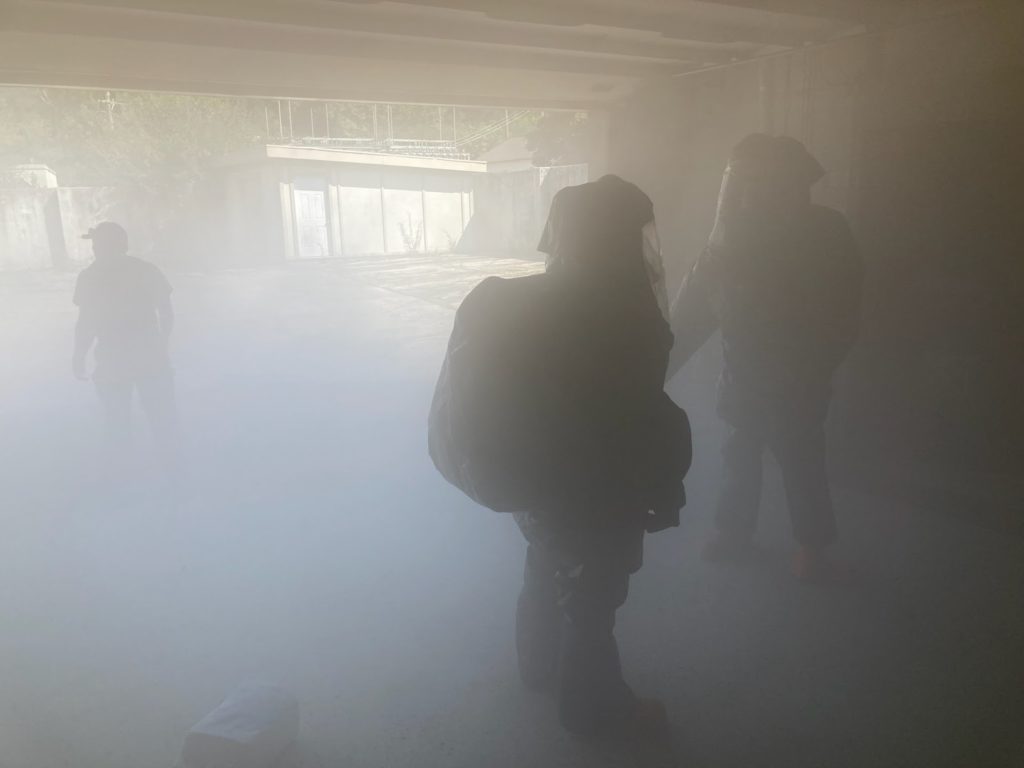In the United States, fires caused 3,500 fatalities in 2020 alone, injuring another 15,200 people. Fires also caused $21.9 billion in property damage that year, as well as claiming the lives of 102 firefighters.

We look at the work of the National Fire Academy, an organization created to enhance the ability of emergency services and allied professionals, enabling them to deal more effectively with fire-related emergencies.
1. The National Fire Academy was founded in Emmitsburg, Maryland, in 1979
Governed owned and operated by the US Fire Administration as part of the Department of Homeland Security, the National Fire Academy is America’s pre-eminent fire education and training institution. The Academy’s original purpose, as defined in a 1973 report to Congress, was to function as the core of the United States’ efforts in fire service education, feeding out information, model programs, and curricula.
2. The Academy shares a campus with the Emergency Management Institute
Operated by the Federal Emergency Management Agency’s Directorate Branch of Preparedness, the Emergency Management Institute serves as a focal point for delivery and development of emergency management training in the United States today.
Located in Emmitsburg, Maryland, the National Fire Academy campus is also home to the National Fire Data Center and the Learning Resource Center library, as well as the National Fallen Firefighter’s Memorial.
When a firefighter dies in the line of duty, local officials notify the Fire Administration. A notice is posted on the memorial grounds, and flags over the memorial are flown at half-mast to honor the fallen firefighter. The National Fallen Firefighter’s Memorial is open to the public year-round.
3. The National Fire Academy presents a variety of on-campus courses
Presenting courses on more than 70 subjects, the National Fire Academy’s curriculum is divided into 12 separate categories, namely:
- Fire Prevention: Public Education
- Fire Prevention: Management
- Fire Prevention: Technical
- Emergency Medical Services
- Fire, Arson and Explosion Investigation
- Incident Management
- Planning and Information Management
- Leadership and Executive Development
- Hazardous Materials
- Responder Health and Safety
- Wildland Urban Interface
- Training Programs
4. The Academy’s Mission is to Educate Fire and Emergency Services Leaders
The National Fire Academy offers free, specialized training courses and advanced management programs for middle to top-level fire service instructors, fire officers, technical professionals, and representatives from associated professions.
The Academy invites individuals with substantial involvement in fire control and prevention, fire-related emergency management activities, and emergency medical services to apply to join one of its courses. Courses are delivered at the Academy’s Emmitsburg, Maryland campus, online, or via local and state fire training organizations, universities, and colleges throughout the United States.
5. In 2007, the To Lift a Nation 9/11 memorial was unveiled on the campus
Standing 40-feet tall, this bronze monument was erected to honor the heroes of the September 11 terrorist attacks. The three-times life-size statue is a depiction of the iconic picture taken by Bergen Record photographer Thomas E. Franklin, who captured an image of three New York firefighters raising the American flag at Ground Zero.
6. The Board of Visitors plays a vital role in upholding Academy standards
The National Fire Academy’s Board of Visitors’ primary purpose is to:
- Review National Fire Academy programs to ensure that learning content aligns with the basic mission of the US Fire Administration.
- Ensure appropriate funding levels for Academy programs.
- Ensure that National Fire Academy facilities are adequate for their assigned purposes.
- Provide recommendations and advice to the US Fire Administration.
Members of the Board of Visitors are selected from professionals in the fields of fire control, fire prevention, fire safety, fire training and education, development and research in fire protection, local government services management, treatment and rehabilitation of fire victims, and other professional organizations to ensure a balanced, inclusive representation of fire and emergency services interests.
7. Each course has its own specific selection criteria
In terms of deciding eligibility, the following considerations are also taken into account:
- The impact the candidate could potentially have on fire safety and protection when they return to their local community.
- The relevance of the skills they learn on the course with regard to their current work and their potential to apply those skills.
- Building a student population that is representative of the total fire service.
8. The National Fire Academy is an equal opportunity institution
The Academy does not discriminate based on sex, race, age, color, national origin, disability, or religious beliefs in its admissions process or student-related procedures and policies.
The US Fire Administration strives to ensure there is equitable representation of women and minorities in its student body, encouraging qualified female and minority candidates to apply for all courses. A limited number of opportunities are also available for non-US residents to attend National Fire Academy courses.

